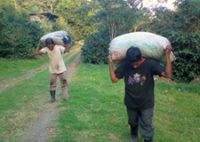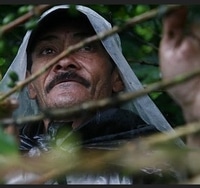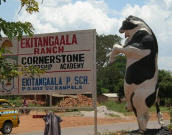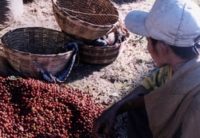We’re often asked questions like, “do you have anything bolder tasting than this or that coffee?” It’s a perplexing question because it means different things to different people. Coffee professionals rarely use the term “bold” in describing cup flavor or taste because it is ambiguous. To some it means “not dark enough”; to others, “too weak”. Yet others expect it to mean nothing short of “a punch in the face in the morning to wake me up!!”. After analyzing the subject in depth, we’ve found that nine times out of ten that the brew technique (or lack of) is the culprit leading to the “do you have anything more bold” query. So if you’ve ever had these kinds of thoughts, we’ve put together this informative guideline that we think can help improve your cup. Remember that not fully meeting any one of these items will impact the intensity and quality of cup flavor. We hope you find this guide helpful.
Tips For Improving Coffee Boldness
For any coffee to shine through in the cup, the following steps must be consistently followed. If they are not, then merely changing a blend or varietal will only result in a different tasting sub-par brew.
Follow each and every item below to achieve great tasting, bold tasting coffee
- Water used to brew must be run through a clean filter that will remove all traces of chlorine. As a test, a small amount of water must be drawn into a clean cup, allowed to cool to near room temperature, and tasted to verify that there are virtually no off-tastes. Strict water filter cartridge changes as recommended by manufacturers must be adhered to.
- A strict equipment cleaning regimen is a must. Anywhere in the brewing equipment that liquid coffee has come in contact with will acquire a film of oil that will rapidly become rancid. Even a very small amount of this rancidity will cause bitterness in the cup. This requires daily cleaning with detergent. Using warm or hot water to rinse without some kind of detergent will not suffice.
- Grind particle size for drip brewing is typically the same as one would find in a can of Folgers pre-ground coffee. One of the ways to verify the correct grind size is to time the brew cycle. 4 minutes is a good target. If brewing time is more than 5 minutes, the grind is probably too fine. This assumes the correct water to coffee grind ratio as listed below in item 4.
- Coffee-to-Water Ratio. There is an ideal amount of coffee that must be extracted from the grinds to the brew. Too little and the coffee will taste weak, tepid, and sour. Too much coffee and it will over-extract and become bitter. There is no such thing as trying to “stretch out” coffee by adding less than the recommended amount and having it taste good no matter what the coffee type or roast level is. We recommend all Lost Dutchman Coffee Blends be brewed at 8.2 Ounces Per 1 Gallon water, or 2.1 Ounces per 32 Oz water. It is most important that an accurate scale be used for this as even a small of a difference of 0.1 ounces will affect the so-called boldness in the cup. Using measuring scoops is not really an accurate enough method of measuring coffee since the bean density depends on roast level and hardness of the bean itself, which varies from each type of bean used.
- Brew temperature: 200-205 degrees. This is difficult to obtain in a typical household brewer. Pour overs such as Hario or Chemex brewers allow full control over what the water temperature is as is contacts the grinds. 6. Coffee hold times should be kept to a maximum of one hour before discarding.
- It is also worth mentioning that generally the higher the quality of arabic used, the larger the ratio of coffee to water should be used to maintain the same level of cup intensity that one is used to. This is because top quality coffees are usually grown at very high altitudes and may have less caffeine than lower grown coffees. This has to do in part with the amount of sun and temperature differences between high and low grown coffees. This ratio will change, but not by much.





